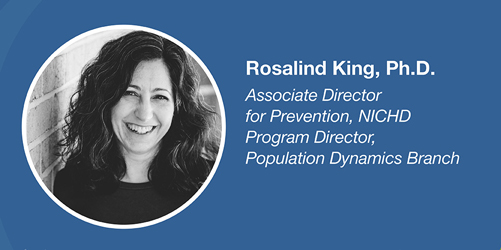 How did you become interested in science and research?
How did you become interested in science and research?
I enjoyed the typical science classes that most students take in high school: biology, chemistry, and physics. My dad was a chemist and he told me not to spend all my time in a lab but to get out into the real world. So, I headed to the College of Behavioral and Social Sciences when I arrived at the University of Maryland. Through sociology and economics, I was fascinated to see how individual decisions were actually reflections of larger patterns in society. My favorite class experience was discussing a book by a professor of law and sociology that examined how our views on reproductive health are not only about the nature of any specific medical procedure but are also wrapped up in our broader world views about gender relations and the status of women in society. Later, I learned about rigorous techniques for data collection, hypothesis testing, and statistical analysis using interview and survey data, and I was hooked.
What brought you to NICHD?
I came from my postdoctoral fellowship to work on two specific projects with the Demographic and Behavioral Sciences Branch (now the NICHD Population Dynamics Branch). One project was an overview of scientific literature that had used the Add Health 
What types of training, experiences, or traits are essential for success in your position?
Being a program official requires constant curiosity to learn about “the next big thing.” It’s really a great job for people whose attention style is to flit from topic to topic. We don’t conduct research directly, so we don’t need the depth of expertise in one subject that is required to do that well. We need to know just enough to assess whether a proposal will advance the field and see where the holes are so we can help the applicant understand the critiques from a study section. But we need to be ready to absorb knowledge in a new area or a new technique as science moves forward.
What do you find most valuable about working at NICHD?
Both my colleagues and the investigators with whom I’ve been fortunate to work over the years as well as the opportunity to explore new areas of science have been invaluable. Because my portfolio includes biopsychosocial science, I have been able to study topics such as how stress affects decision-making, which I never encountered in my graduate training. Perhaps most fortuitously, I signed up for a Foundation for Advanced Education in the Sciences 
Can you explain your job to people who are not familiar with scientific positions outside of a laboratory or clinical setting?
In my own research, I’m a quantitative social demographer. I use theory from sociology and economics to develop hypotheses about how people manage their fertility—behavioral patterns of contraceptive use, intendedness of pregnancies, age patterns of childbearing, and use of assisted reproductive technology. Then, I use publicly available data from the National Center for Health Statistics, the Centers for Disease Control and Prevention, and nationally representative population data collected through demographic research to run models using statistical software. I go back to my theoretical concepts to interpret the output. Secondary analysis of existing data is arms-length from direct interaction with people, but demographers are increasingly using mixed methods, which combines secondary analysis with qualitative methods, such as interviews and focus groups, which brings back that direct real-world element.
If you have advanced along your career within the institute, can you summarize your career steps and how you successfully navigated these changes?
In 2018, I took on the role of acting NICHD associate director for prevention in addition to my program official role. I moved into the position officially the following summer. I had to take on a more holistic view of NICHD beyond my own portfolio and branch. I asked a lot of questions and set up meetings with branches and divisions across NICHD, including our intramural laboratories, with which I hadn’t had a lot of previous contact. Presenting on my ideas and getting feedback was invaluable for identifying priorities. I was able to participate at an entirely different level in the NICHD strategic planning process, which was a little unnerving, but really pushed my thinking forward about the unique way that we approach prevention science, compared to the rest of NIH.
What advice can you offer to people who are at an earlier stage of their career?
Deciding whether you want to do your own research and go deep or oversee research and go broad is a fundamental decision. It’s possible to go back and forth between roles. But even in academia, there are faculty who veer toward administration. Knowing this about yourself will help you identify activities to build your resume. It’s important to be strategic about where you put your energy so you can do the work that is meaningful to you. It’s really tempting to want to grab every opportunity all at once, but careers last for years and years, so it’s important to take a long-term view.
Return to Get to Know NICHD.
 BACK TO TOP
BACK TO TOP